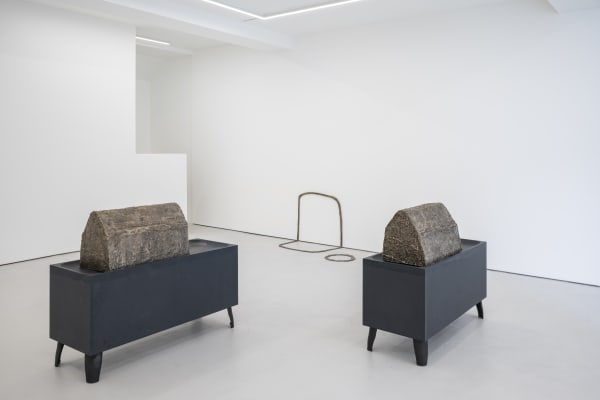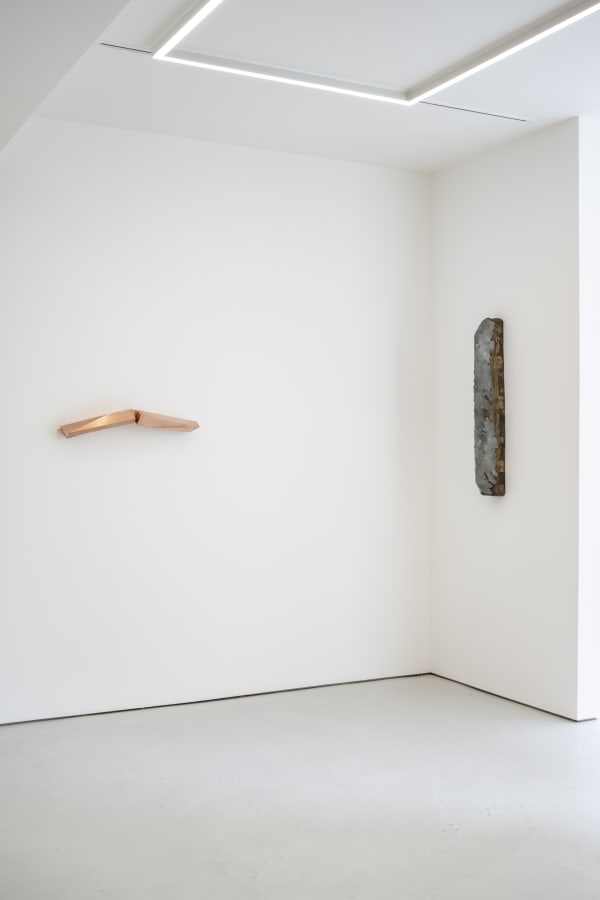Lucy Skaer: Day Division
GRIMM is pleased to present Day Division, a solo exhibition of new and recent works by the British artist Lucy Skaer. This is the Scotland-based artist’s fourth solo presentation with GRIMM. The exhibition will inaugurate the gallery’s new London location at 2 Bourdon Street, opening on September 14 and on view until October 29.
Throughout her practice, Lucy Skaer interprets imagery and objects found within diverse contexts and histories, before transforming or disrupting their material and metaphorical origins. In Day Division, Skaer brings together multiple ongoing series of sculptures that she has been exploring and adapting in some cases for up to ten years. Together, the works share an interest in the capacity of sculpture to articulate, disrupt or keep time, as objects that might appear simultaneously as monuments of the deep past and of their own creation but also as witnesses of the immediate present within the context of an exhibition and interaction with each viewer. Blurring the line between abstract and representational, formal and functional, the sculptures in Day Division mesh together different visual vocabularies in order to evade easy identification, so as to reveal the multiple potentials of each object or image.
Marking a physical and temporal division throughout the gallery space are a series of vertical sculptures, Day Dividers, from which the exhibition draws its name. The sculptures demarcate the beginning and ending of space and time within the exhibition, acting as a kind of guiding visual metronome. Layering daubs of oil paint over a narrow band of bronze, they collapse and combine two material traditions, offering pattern and texturality on their surface, whilst containing a solemn timelessness in their abstract underpinnings.
On the surrounding walls are Hares, adapted from copper ingots to which ears and eyes are added, laboriously transforming something materially minimal or cold into something lively, animated and animal. Derived from Skaer’s interest in the illustrations from the Livre de Chasse, a Mediaeval hunting manual written between 1387-1389 by Gaston III, Count of Foix, the Hares appear as frozen moments within a hunt, a balance of the force of desire, the blankness of raw material and the possibility of empathy.
Installed upon the gallery floor are further series of sculptures, including Barrels and Bindings. The Barrels have their origins in Skaer’s exhibition with Rosalind Nashashibi, Future Sun, at S.M.A.K. Ghent in 2019. Each stave of these small vessels is made from a different material - ceramic, enamelled metal, cast iron, wood - all of which were being used within other artworks in the exhibition. The barrels themselves then become an amalgamation or miniature world formed of the byproducts of Skaer’s other artworks and their production. They act as a conceptual compression of a specific time, whilst also allowing us to unravel new meanings with each interaction and wonder about what the containers might hold inside. Encompassing the barrels are bronze hoops, which become isolated to create Bindings, a circular form recalling a painterly line that takes on its own life as a minimal geometric object, an attempt to contain.
Mounted on slate benches are Skaer’s Haystacks, bronze sculptures recalling the texture of hay mounds, which cast a painted shadow on their stone pedestal. Another unit of storage and preservation against the future, these works also refer to the production of a specific kind of light and the passing of time, famously captured by Claude Monet in his series of paintings from 1890-91. Punctuating countryside fields for centuries, haystacks conjure a variety of atmospheres at each time of the day whereby their shadow is elongated and foreshortened depending on the time. They are frozen here in bronze, gesturing to this semi-archetypal image that is increasingly overlooked, orphaned by post-industrial society.










